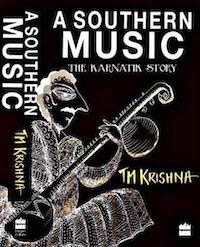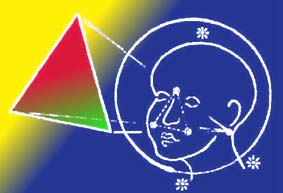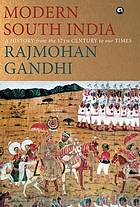
A Southern music: The Karnatik story
By T.M. Krishna, HarperCollins, Rs 699
If a successful and busy Karnatic singer takes time off in order to write reflections on South Indian or “Karnatic” music, the book release function is bound to be met with considerable interest. […]
He pays tribute to the tambura (the tanpura) as “the life-giver, the soul of our music”. For Krishna, “it is the one instrument that can be said to hold within itself the very essence of classical music. So unobtrusive is this instrument, so self-effacing in its positioning on the stage and so tender of nature, that it is almost taken for granted.” Sadly, the tambura is rarely played “live” even during live concerts where it tends to be drowned by its electronic surrogate with devastating effect. Restoring its presence would seem indispensable in efforts such as those outlined under two chapter headings, “To Remove the Barriers Imposed by the Music” and “To Expand the Listenership of Karnatic Music”. The very concept of “fusion” is dismissed as a “lopsided idea of the music.” […]

The fact that 15 out of 588 pages are assigned to an Index is welcome in view of the publisher’s ambition to provide readers with a “path-breaking overview of South Indian classical music.” A mere glance at the Contents page and Index proves that, as in his concerts, T.M. Krishna would take nothing for granted, starting with instructions titled “A Note on Reading”. […]
Source: Book review by Ludwig Pesch, The Telegraph (Calcutta)
Address : http://www.telegraphindia.com/1140228/jsp/opinion/story_18023416.jsp#.UxC3W16kAfl
Carnatic music as experienced today: its social and political context in a nutshell

As the nineteenth century closes and in January 1901 a distant Empress dies, the onlooker recognizes an advance across South India in education, a growing print culture, and an emerging middle class of small landholders, doctors, lawyers, college teachers, writers, government employees and merchants.
In the realm of ideas, the onlooker discerns a few currents. One is of nationalism. Another is for reform in traditional customs and exclusions. A third is of linguistic pride. And a fourth pursues equality among castes.
Rajmohan Gandhi in Modern South India: A History from the 17th Century to Our Times , p. 236
This is a Dravidian story, and also more than that. t is a story involving four centuries, the seventeenth, eighteenth, nineteenth and twentieth, yet other periods intrude upon it… [cover notes]
Information about the persons, items or topics
Research & Custom search engines
The Oxford Illustrated Companion to South Indian Classical Music
Learn & practice more
A brief introduction to Carnatic music (with music examples and interactive map)
Bhava and Rasa explained by V. Premalatha
Free “flow” exercises on this website
Introduction (values in the light of modernity)
Video | Keeping tala with hand gestures: Adi (8 beats) & Misra chapu (7 beats)
Why Carnatic Music Matters More Than Ever
Worldcat.org book and journal search (including Open Access)